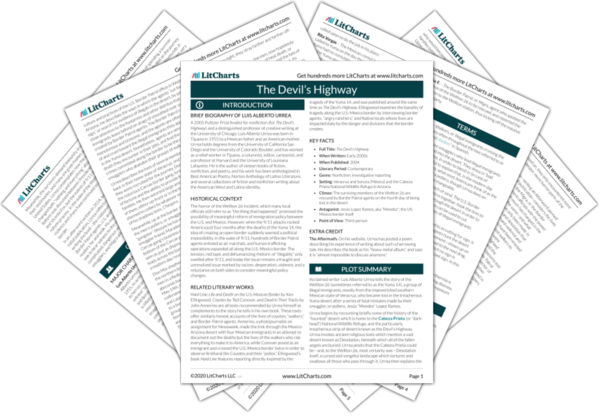Pollo or pollero, immigrant or American, ancient wanderer or modern-day walker, the desert consumes everyone in the same way. The mythic deaths Urrea alluded to in the early chapters of the novel take on a new weight as he implores his audience to imagine the specifics of heat death, and to bear witness to the suffering that the Wellton 26 would soon face.
